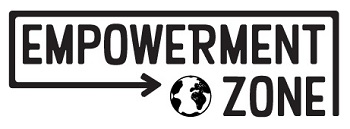In her early 20s, Meghan Forrester dabbled in the luxury skincare market and discovered some ugly truths about the industry which made her to question her whole philosophy on life. She decided to give away all of her possessions and live a simple life in the hills of Northern New South Wales - a complete contrast to the bleached hair, red lipstick and high heels that once made up Meghan’s costume.
Fast forward 20 years and you will find Meghan in clothes that can be napped in, shoes that can be danced in, and she’s grateful for messy buns being on-trend. With her warm and engaging presence, Meghan inspires real and uplifting conversations. She believes that life is too short to muck around with faking it, comparing, competing or being hard on ourselves. “It’s all about relationships, being an authentic participant in life and celebrating every moment,” says Meghan.
Meghan infuses this passion into her natural, palm oil free skincare company, Evohe, which she started over 10 years ago with her late husband, Barry Forrester. Evohe epitomises the groundbreaking feats that are possible when two or more people of like mind, join together and dedicate themselves to creating a tomorrow more beautiful and radiant than today. “When we began Evohe, we didn’t want to conform to what every other natural skin care brand was doing,” says Meghan. “We observed practices that weren’t ethical. Tricks of the trade that meant you could avoid declaring preservatives, and underhanded methods that consumers would never know about – but we would,” she said. Meghan believes the world now wants powerful, innovative natural skin care – not empty promises. “Consumers are tired of airbrushed marketing campaigns and endless lists of unpronounceable chemical ingredients.”
Evohe skin care is a revolution in natural and luxurious skin care that joins a new generation of independent businesses that are serious about an evolution in ethical and sustainable business practices, and the production of quality, natural skincare products that have minimal impact on the environment. Each product is handmade with love in Australia using the best available Australian extracts. All ingredients are carefully selected to ensure they are high quality and potent with the power to completely nurture the body.
Being palm oil free products is very important to Evohe.
“Mother Nature is an incredible treasure chest of natural ingredients – in fact, she really has done all the hard work for us,” says Meghan. The ingredients used in Evohe skin care are formulated with minimal processing to remain bioactive. This ensures each formulation has an active and potent effect on skin tissue and cells, and works to plump, nourish and hydrate. “Ingredients matter a lot to us and our customers. It’s our mission to formulate the highest quality, most nutritious and purest skin care and cosmetics so you can nourish your skin in the safest and healthiest way possible. We do this by vehemently avoiding cheap, harmful skincare ingredients that should never be found on the skin,” she said.
It’s important for Meghan that customers trust everything about Evohe. For every extract, raw material and essence that goes into an Evohe product, Meghan and her team conduct an extensive supplier audit, ensuring their ethics, sourcing methods and day-to-day actions in business are aligned with the Evohe Conscious Living Checklist. “We have abandoned many opportunities that made good business sense on paper, for collaborators and suppliers whose main concern was the bigger picture not just the bottom line,” she said.
At every stage of Evohe’s evolution, Meghan has steadfastly held to her values. “Many times, it would have been easier to go with a cheaper, less effective ingredient. Even when faced with seemingly no option but to compromise, we’ve resolutely held our ground,” says Meghan. In the process, Meghan has discovered groundbreaking ways to create more efficacious, kinder skin care. “When you use Evohe, you know unequivocally, that the true cost of your beautiful, glowing skin, really does begin and end with the price tag.”
“Mother Nature is an incredible treasure chest of natural ingredients – in fact, she really has done all the hard work for us,” says Meghan. The ingredients used in Evohe skin care are formulated with minimal processing to remain bioactive. This ensures each formulation has an active and potent effect on skin tissue and cells, and works to plump, nourish and hydrate. “Ingredients matter a lot to us and our customers. It’s our mission to formulate the highest quality, most nutritious and purest skin care and cosmetics so you can nourish your skin in the safest and healthiest way possible. We do this by vehemently avoiding cheap, harmful skincare ingredients that should never be found on the skin,” she said.
It’s important for Meghan that customers trust everything about Evohe. For every extract, raw material and essence that goes into an Evohe product, Meghan and her team conduct an extensive supplier audit, ensuring their ethics, sourcing methods and day-to-day actions in business are aligned with the Evohe Conscious Living Checklist. “We have abandoned many opportunities that made good business sense on paper, for collaborators and suppliers whose main concern was the bigger picture not just the bottom line,” she said.
At every stage of Evohe’s evolution, Meghan has steadfastly held to her values. “Many times, it would have been easier to go with a cheaper, less effective ingredient. Even when faced with seemingly no option but to compromise, we’ve resolutely held our ground,” says Meghan. In the process, Meghan has discovered groundbreaking ways to create more efficacious, kinder skin care. “When you use Evohe, you know unequivocally, that the true cost of your beautiful, glowing skin, really does begin and end with the price tag.”


























